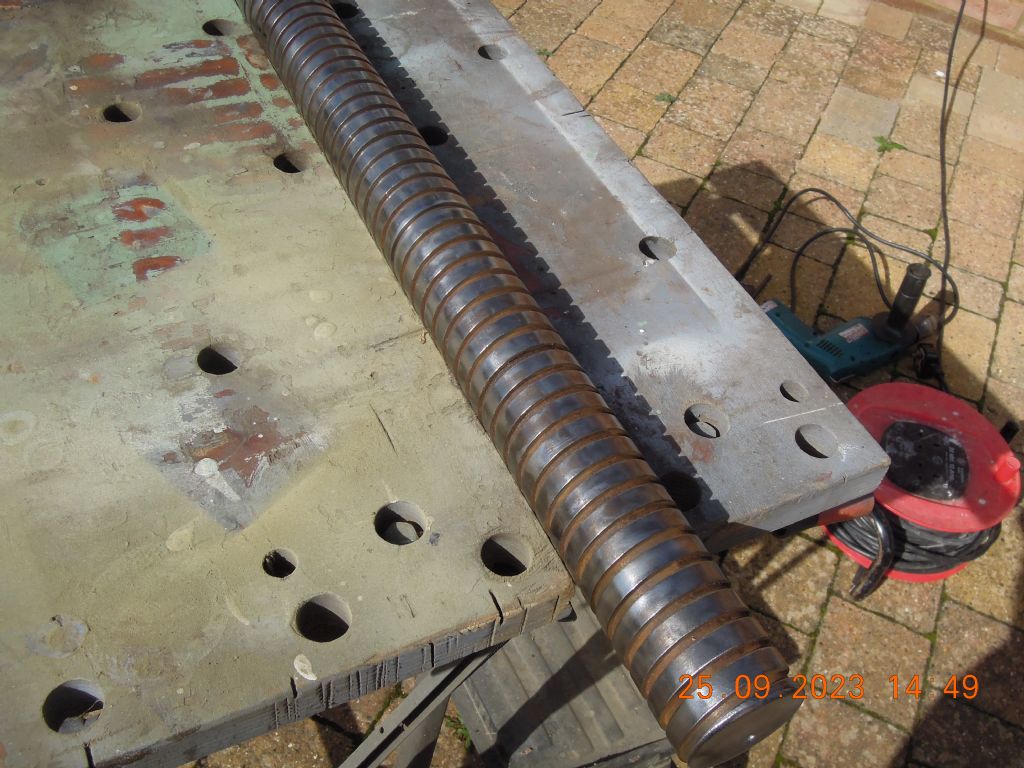Hi Gerry and all,
Bill has beaten me to it (and stuck his head above the parapet first) – I would support cleaning it of all grease, wire brushing by hand to remove excess rust, then immersing it in Evaporust in a tube. Wire brushing to remove excess rust reduces the amount of Evaporust needed to clean away the residual rust or the degree to which the Evaporust is "used-up" on a given component.
Alternatively (and this is what I do when the component is too awkward in shape to immerse properly, or if I haven't enough Evaporust in stock to do full immersion), I "bandage" the component in paper towels well-soaked in Evaporust,.then cover it in a plastic bag or cling-film to stop it drying out. That way may need multiple applications (and where feasible I often use wire between applications), but it's probably more effective than just brushing on (others may have different experiences). Be careful not to let the towels or component dry out though, as (in my limited experience) you can end up with a hard-to-remove black deposit when it's been allowed to dry out.
If the rust is very light, you may not see any significant traces of it after treatment. If it's more heavy, the formerly rusty patches will probably be darker and I don't think there's much you can do about that without removing metal.
As I have bought quite a few of my tools and machine accessories at knock-down prices simply because they were covered in rust and looked absolutely horrible, yet cleaned up well with Evaporust, I've had positive experiences of this overall approach! I'd certainly suggest trying it over and above a highly abrasive approach that might cause unnecessary wear. Obviously if the screw surface is really pitted with rust and likely to act as a "file" on any nut etc. that engages with it, then all bets are off and a more aggressive approach may be needed to get rid of the pits.
That's my suggestion anyway! Other experiences are welcome. Usual disclaimer, I have no connection with Evaporust other than finding it useful.
Kind regards
Arthur
 Michael Gilligan.
Michael Gilligan.







